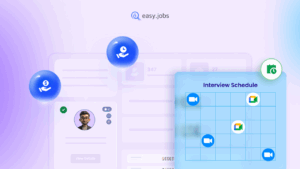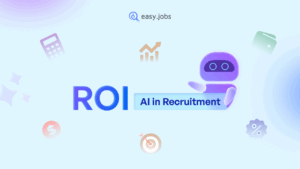You probably already deal with hiring, payroll, and policy updates. These are the usual HR responsibilities that get the most attention. But what about the problems that do not show up on reports? The ones that slowly affect culture, morale and retention?

According to Gallup, only 50% of employees say they know what is expected of them at work. That means half your workforce may be operating in confusion or silence just getting by, not thriving.
These are the issues that do not make noise but cause the most harm when ignored. Think about employees who are present but not engaged, or managers who push good people away because they were never trained to lead. Let us explore ten HR challenges that many teams face but rarely talk about. These are real, human issues that quietly affect performance and satisfaction.

You will not only learn to spot them. You will also get simple, practical solutions that you can use right away. Fixing these hidden problems can improve morale, increase retention, and build a stronger workplace culture.
10 HR Issues in Workplace (And How to Solve Them)
You already manage hiring, payroll and compliance. But what about the HR problems no one talks about? The ones that creep in quietly and hurt morale, performance, and trust? From burnout to biased promotions, these issues are often invisible until it is too late. Most organizations overlook them, not because they do not care, but because these problems are hard to spot and harder to admit.
In this list, you will uncover ten hidden HR challenges that may be affecting your people right now. And for each one, you will get a practical solution you can start using today.
1. “Presenteeism” – The Hidden Productivity Killer
You see your team at their desks. They join meetings. They respond to emails. But are they really present?

Presenteeism happens when employees show up physically but are not mentally engaged. They may be tired, overwhelmed, or burned out. They are doing the bare minimum to get by. The cost is invisible, but huge. Projects slow down. Quality drops. Morale sinks. This is not about being absent. It is about showing up without actually contributing.
Why It Gets Ignored
It is easy to measure absence. It is harder to measure someone being there but checked out. Many managers wrongly assume that if someone is in the office or online, they are productive. But that is not always true.
The Solution
- Support Mental Health Proactively: Offer flexible hours, mental health days, and access to confidential counseling. Normalize using them.
- Train Managers to Spot Burnout: Teach managers to look for signs like low energy, missed deadlines, or withdrawn behavior. Focus on results, not just hours worked.
- Build a Culture of Trust: Let people speak up when they are struggling. Remove fear. Create space for honest conversations about workload and wellbeing.
2. The “Loyalty Tax” – Punishing Long-Term Employees
You hire someone new and offer them a competitive salary. But what about the loyal employee who has been in the same role for years?
Often, long-term team members earn less than new hires in similar roles. This pay gap builds resentment. It sends the message that loyalty does not pay. Over time, it encourages job-hopping just to get the salary they deserve. This silent penalty is called the “loyalty tax.”
Why It Gets Ignored
This problem often happens by accident. HR teams focus on matching market salaries to attract new talent. But they forget to check for internal equity. As a result, loyal employees fall behind.
The Solution
- Run Regular Salary Audits: Review salaries at least once a year. Compare internal pay to market benchmarks and fix unfair gaps.
- Share Transparent Pay Bands: Let employees know the salary range for each role. This builds trust and removes guesswork.
- Reward Loyalty in a Real Way: Give long-term employees meaningful rewards like extra vacation, retention bonuses, or stock options. Show them they matter.
3. “Career Cushioning” – The Rise of the Secret Job Seeker
Your employees may smile in meetings and hit their deadlines. But behind the scenes, many are browsing job boards, polishing resumes and building backup plans. This quiet preparation is called career cushioning.
People do this because they do not see a future where they are. They stay for now, but they are ready to leave the moment something better appears.
This creates a team that looks stable but is always one email away from turnover.
Why It Gets Ignored
If no one complains, leaders often assume everyone is happy. But silence does not mean satisfaction. Many employees quietly disengage before walking out the door.
The Solution
- Promote Internal Mobility: Make it easy to apply for internal roles. Encourage movement within the company so people can grow without leaving.
- Create Development Plans: Work with each employee to build a clear path forward. Offer learning opportunities and support.
- Hold “Stay Interviews”: Ask employees why they stay and what might make them leave. Use this information to improve retention.
4. The “Managerial Divide” – Promoting Experts, Creating Bad Bosses
You take your best performer and promote them to manager. It seems like the right reward. But being great at the job does not mean being great at leading others.
Many new managers are never trained in how to lead people. They struggle with delegation, conflict, and team motivation. As a result, the whole team suffers. Morale drops. Turnover rises. Productivity stalls.
You do not just lose a strong individual contributor. You gain a weak manager.
Why It Gets Ignored
Companies follow the traditional path. Promote the best performer. But few organizations offer an alternative track for technical experts. And leadership training is often skipped or rushed.
The Solution
- Offer Dual Career Paths: Let people grow without becoming managers. Create a clear “expert” track alongside the “manager” track.
- Make Leadership Training Mandatory: No one should manage a team without first learning how to lead one. Teach skills like communication, feedback, conflict resolution, and team development.
- Use 360-Degree Feedback: Give employees a voice. Let them rate their managers anonymously. Use the results to support leadership growth.
5. “Proximity Bias” in the Hybrid Workplace
You walk into the office and chat with a few team members. They are top of mind. So, when a new project comes up, you pick one of them.
Meanwhile, your remote team quietly misses out.
This is proximity bias. It happens when leaders give more attention, opportunities, and praise to those they see in person more often. In hybrid setups, this bias creates unfair advantages and hurts team unity.
Remote employees feel invisible. They lose motivation and may eventually leave.
Why It Gets Ignored
Managers do not always realize they are doing it. The bias is unconscious. But the effects are real and damaging.
The Solution
- Use Shared Communication Tools: Rely on digital tools like Slack or Teams for updates and collaboration. Make sure everyone, no matter where they work, stays in the loop.
- Focus on Outcomes, Not Visibility: Review performance based on results and goals. Do not rely on who is more present physically.
- Train Against Bias: Teach managers to recognize and address proximity bias. Use real examples and practical strategies.
6. The “Feedback Fallacy” – More Feedback Is Not Always Better
You keep hearing it: “Give more feedback.” So teams start giving it constantly. But much of it is rushed, unclear, or overly critical.
Instead of helping people grow, it creates tension. Employees feel judged, not supported. They become defensive or shut down completely. This leads to anxiety and poor communication.
More feedback is not always helpful. What matters is how it is given.
Why It Gets Ignored
“Feedback” sounds like a good thing, so no one questions it. But untrained feedback can cause more harm than good, especially when it focuses only on flaws.
The Solution
- Use Feedforward Instead of Feedback: Focus on what someone can do better next time, not just what they did wrong before. Keep the conversation future-focused.
- Build on Strengths: Help employees grow by building on what they already do well. Shift from fixing weaknesses to developing potential.
- Set Up Structured Check-ins: Replace random feedback with regular, agenda-based meetings. Keep them focused on progress, goals, and development—not just problems.
7. “Weaponized” Superiors – Using Policies to Punish
A manager does not like an employee. Instead of addressing it directly, they start building a case. They document every small mistake. A late login. A missed email. A forgotten form.
Policies become weapons.
This turns HR into an enforcement tool, not a support system. It damages trust. Employees fear HR instead of turning to it for help.
Why It Gets Ignored
It looks like the manager is just following the rules. On paper, everything seems justified. But the pattern shows a deeper problem—bias, favoritism, or even retaliation.
The Solution
- Position HR as a Neutral Party: HR should not just enforce. It should listen, ask questions, and examine the full context. Every case needs a fair and balanced review.
- Look for Patterns, Not One-Offs: Focus on repeated behavior, not isolated missteps. Consistency matters more than perfection.
- Hold Managers Accountable: Track morale and turnover at the team level. If a pattern of conflict shows up under one manager, it is time to intervene.
8. The “Wellbeing Washing” Trap
Your company offers yoga apps, fruit bowls, and “Wellness Wednesdays.” But your team is still stressed, overwhelmed, and burning out.
This is wellbeing washing. It means offering surface-level perks without fixing the deeper causes of stress. People see through it. They stop trusting leadership. The culture becomes toxic, even if it looks healthy on the surface.
Why It Gets Ignored
It is easy to provide perks. It is harder to change things like workload, poor leadership, or toxic expectations. So companies stop at the easy fixes.
The Solution
- Find the Real Problems: Use anonymous surveys to ask about stress. Look at workload, deadlines, and team dynamics. Do not assume the issue is solved with a meditation app.
- Lead by Example: Leaders should take breaks, use time off, and show that wellbeing matters. If the boss never disconnects, no one else will.
- Build Wellbeing into Work: Set realistic deadlines. Limit after-hours emails. Make sustainable performance part of how success is measured.
9. “Generational Gaps” vs. “Life Stage” Needs
People often blame workplace tension on generations. They say things like “Gen Z does not want to work” or “Boomers don’t adapt.” But these labels hide the real issue.
Most of the time, conflict comes from life stage needs, not age. A parent with young kids has different priorities than a new graduate or someone close to retirement. These differences exist across all generations.
When we rely on stereotypes, we ignore what people truly need.
Why It Gets Ignored
It is easier to say “Millennials want this” or “Gen Z needs that” than to actually ask people what matters to them. But these generalizations lead to poor policies and misunderstandings.
The Solution
- Offer Flexible, Life-Stage Benefits: Create a menu of benefits for different needs: childcare support, elder care, flexible schedules, or professional development. Let people choose what fits.
- Set Up Cross-Generational Mentoring: Pair team members from different age groups. Let them learn from each other and build mutual respect.
- Explain the “Why” Behind Policies: When you introduce a new benefit or rule, explain the purpose. This helps different groups understand and support it.
10. “Data Overload, Insight Underload”
Your HR system tracks everything—engagement scores, turnover rates, training hours, and more. But having all this data does not mean you know what to do with it.
Many HR teams are overwhelmed by dashboards and reports. They gather data but struggle to turn it into clear, helpful action. This leads to data overload and insight underload.
Decisions get delayed. Problems go unnoticed. Leaders feel informed, but nothing actually changes.
Why It Gets Ignored
Collecting data feels productive. But analysis takes time, skill, and focus. Without those, the data just sits there.
The Solution
- Start with the Right Questions: Before you pull a report, ask: “What are we trying to solve?” Let business needs guide your data use.
- Invest in HR Analytics Skills: Train your team to understand trends, run reports, and share insights. Or hire a data-savvy HR analyst to help.
- Tell a Story with Your Data: Do not just show numbers. Say what they mean. For example: “Our turnover is 15%, but in one department, it is 40%—and it is costing us $100K a quarter.”
HR issues do not always show up in reports or exit interviews. Many of them grow slowly disengaged employees, unfair pay gaps, unchecked bias, or lack of growth opportunities. These are the actual culture killers.
Boost Employee Retention, Culture & Keep Top Talent
You now know the ten HR issues that do not get enough attention. These are not policy problems. They are human problems. They show up in quiet ways low engagement, silent job searches, or missed promotions. But they do the most damage when ignored.
If you want to build a strong, trusted workplace, you need to go beyond surface fixes. You need to deal with what is really happening in the culture, in the minds of your team, and in the way managers lead. Start small by picking one or two of these issues that feel familiar in your organization. Talk about them with your team.
Look at the solutions. Make one change this month. Real HR impact is not about being perfect. It is about having the courage to fix what others ignore. Building a great workplace is not about avoiding problems. It is about choosing to face the right ones and solving them for good. If you found this article valuable and want more insights on topics like this, be sure to subscribe to our blog. For real-time discussions, tips and networking, join our Facebook Community and connect with fellow HR professionals and business leaders.







